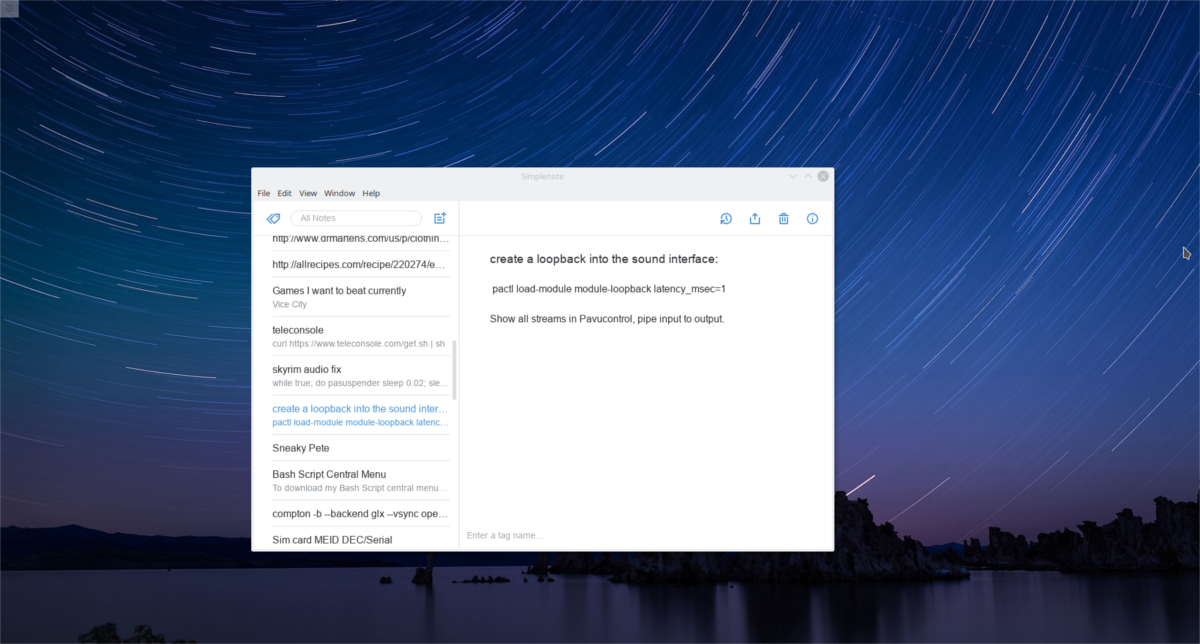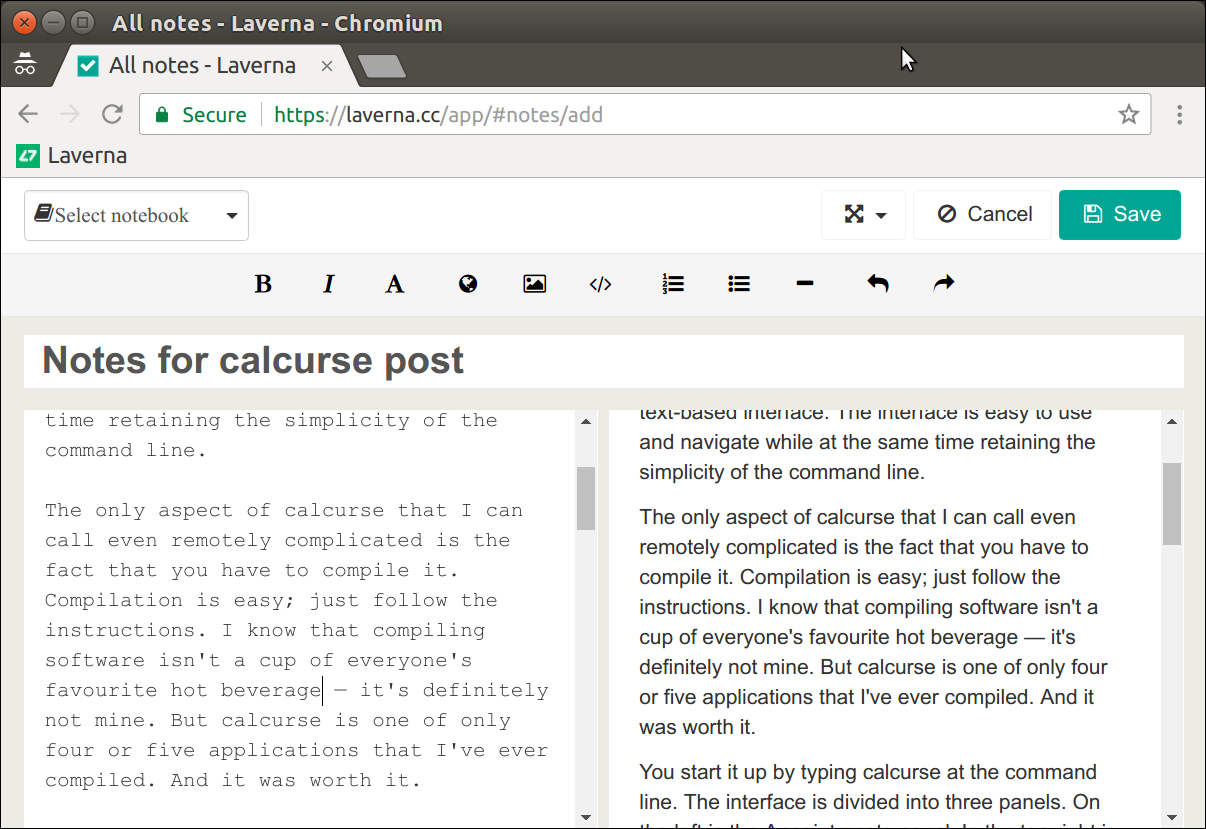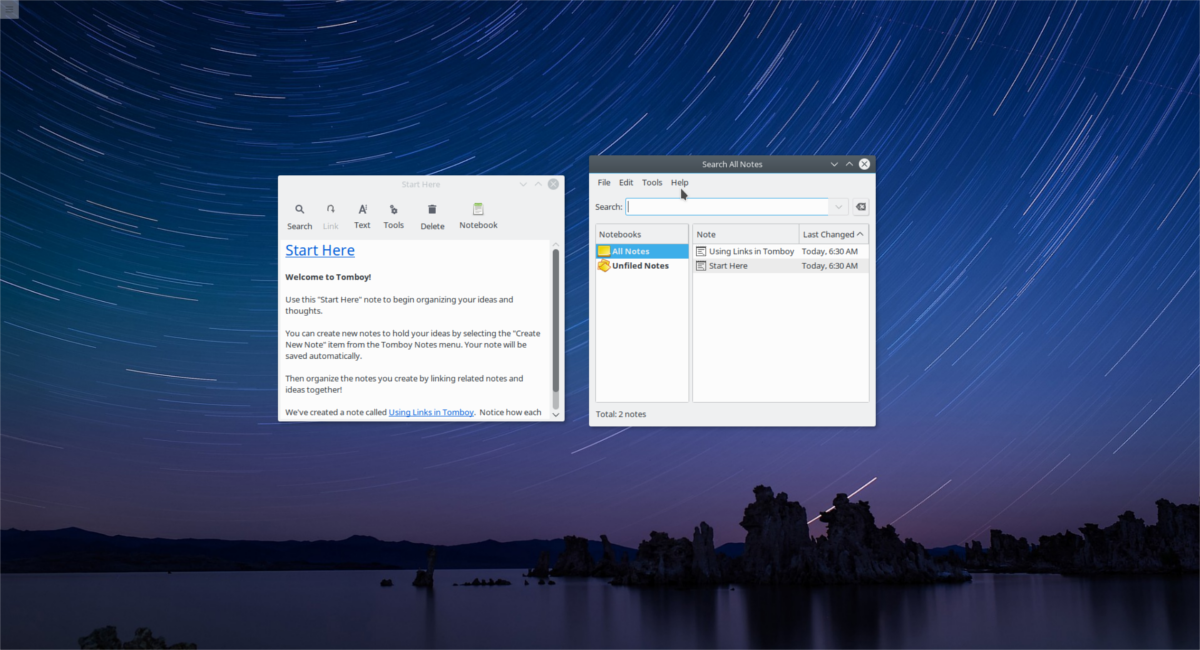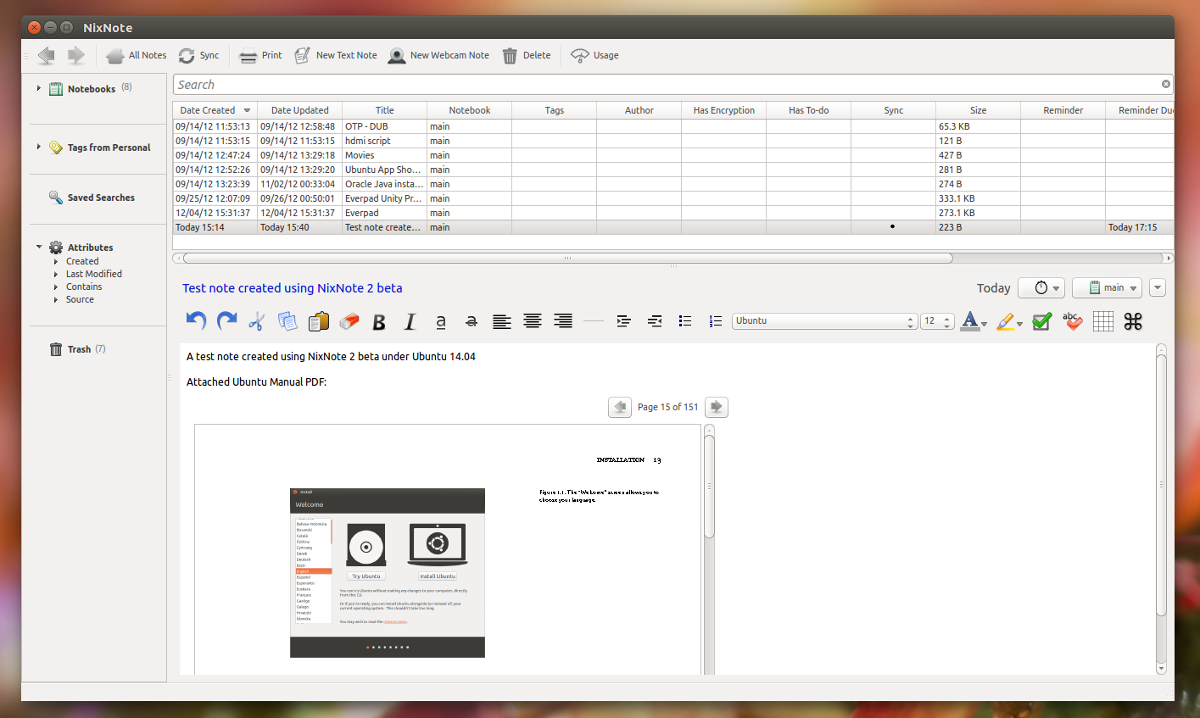10 Great Apps For Taking Notes On Linux
Note-taking apps are useful for lots of things, such as journaling, studying, inspiration, or even just to store your random notes and ideas throughout the day. While there are lots and lots of options out there, the pickings are slim for Linux users.
We’ve taken the time to research all the best Linux note-taking apps to compile this list of the ones we recommend you check out. Maybe you’ve heard of these options, or maybe you haven’t, so we’ve also included a brief look at least one of our favorite features in each app so you can make an informed decision.
10 Best Linux Note Taking Apps
Below is our hand-picked list of the all-time best apps for writing notes on Linux. A lot of them share some of the same key features — think syntax highlighting, markdown support, to do list creation, full text search, etc. — but each one is also unique in various ways, so be sure to take the time to look through the features.
Use any of these apps (or all of them!) to store all the notes you could possibly imagine. Some are even cross platform, which is great if you use one of the other major platforms.
1. Simplenote

Out of all the note taking apps available, Simplenote stands out as an easy-to-use, dare I say simple note taking app for Linux. It’s so popular, it’s even packaged in snap form! This app is chock-full of features — we particularly like the focus mode and cross-platform availability, but we wish the app updated more often with new features and improvements.
Features
Real-time collaboration, publish notes for the public to view, markup, tags, automatic synchronization, note pinning, offline access, search through all notes, revision history, distraction-free mode, export notes, keyboard shortcuts
This one is a cross platform app, so it works on not only on your Linux system but also Windows, macOS, Android, iOS, and the web. Well… what are you waiting for? Check out Simplenote now!
2. Laverna

Laverna is a great note-taking application for those who like to turn their note apps into a myriad of rich pictures, web clippings, etc. This app is very similar to Evernote, so it’s probably the best option if you’re looking to get away from Evernote for something free and open source.
There’s a clear downside to Laverna for those who love to have a local app on their system. However, if you can handle the fact that the tool is entirely web based, this is a great option, especially if you want end-to-end encryption for your notes.
Features
Encryption, favorites, multiple notebooks, markdown-based editing, synchronize notes with Dropbox, multiple editing modes (distraction free mode, preview mode, and normal mode), no registration required to create notes, keybindings, import/export capabilities, web-based access
It works on a variety of platforms and, of course, can also be used directly from a web browser. Learn more about this note app from the Laverna website.
3. Tomboy

Tomboy is one of the original note-taking apps for Linux. Unlike the apps on this list, this one is centered more around “sticky notes”. It’s not a platform app with an easy syncing protocol. Instead, you take and store notes locally on your PC, and can sync notes by setting up an SSH or WebDav share. The Gnome project works on Tomboy.
The Tomboy notes app isn’t glamorous, or even that interesting. It’s the product of another era. In a world where everyone is using Google Keep and OneNote, Tomboy doesn’t really fit in. However, if you find yourself not interested in “note platforms” with “cloud storage”, Tomboy may be just what you need.
This isn’t the easiest note-taking app to set up if you’re interested in syncing your notes across various platforms, but we do like the solid user interface and add-on access to expand the app’s functionality.
Features
Text/syntax highlighting, built-in spell check, automatic link creation for email and web links, cross-platform synchronization, bulleted lists, back up & restore notes, and add-ons
To learn more, and to download Tomboy, go to the official Gnome product page.
4. NixNote

If you’re a Linux user that just can’t give up Evernote, you can install a third-party client to handle your notes. There are many third-party clients for the Evernote platform on Linux, but one we like is called NixNote.
While NixNote isn’t the first choice for Linux users as it’s based on a closed platform, it still manages to be a great product. If you’ve got to have access to Evernote on Linux, we recommend you install NixNote.
Features
Access Evernote items (notes, clippings, and bookmarks), local note database for offline access, encryption
You can download NixNote, the “unofficial client of Evernote for Linux” on GitHub.
5. Standard Notes
With the tagline “unlimited notes, unlimited devices, all for free,” we couldn’t pass up adding this Linux app to the list. The software is open source, audited, and backed by paying users (there are two premium plans if you want extra features).
Some things we like about this app are that you can password protect specific notes and make daily backups over email. However, because there are paid editions, you’ll miss out on things like 1-year revision history and simple things like checklists and rich text editing.
Features
End-to-end encryption, offline access, 2FA, and exporting. If you choose to upgrade, you’ll also get access to a daily journal, spreadsheets, rich formatting, Web Clipper, and more.
You can download Standard Notes not only for Linux, but also Windows, macOS, Android, and iOS. There’s also a web application.
6. Inkdrop
All the Linux note-taking apps listed above are free or have a free option. Inkdrop is only free for 30 days, but we love how robust it is. Designed with markdown support and developer-focused features “to improve dev workflow,” it feels like a full-featured note management system that you can use for anything.
Features
Plugin support, multi-language code/syntax highlighting, distraction-free mode, nestable notebooks, note pinning, tags, note status (for progress tracking), public sharing, offline note access
Visit Inkdrop’s website for all the details.
7. CherryTree
Another way to write notes on Linux is with CherryTree. Called a hierarchical note taking app (i.e., it uses the breadcrumb structure), it features rich text and syntax highlighting and can store data in either a single XML or SQLite file, or in multiple files and folders.
Features
Supports multiple languages, spell check, handles tables and images, rich text formatting (e.g, strikethrough, background color, H2s), text alignment, create link list from a folder on your PC, save/print to PDF, automatic URL hyperlinking
There are lots of other features we didn’t list here. But fortunately, there’s an extensive user manual if you need help. Otherwise, download CherryTree now to get started.
8. Notable
This is a beautiful Linux note-taking app with an intuitive user interface that can be used in a dark theme if you prefer that! Notes are written in markdown (it uses the same markdown editor as Visual Studio Code) and you can write KaTeX expressions, Mermaid diagrams, and more.
One of our favorite features is the ability to manipulate multiple notes simultaneously. This means you can delete, tag, pin, or favorite several notes at once to save time.
Features
Zen mode, split editor mode to see rendered text as you’re editing, built-in cheat sheet and tutorial, stay-on-top option, tag and attachment support, link to other notes and attachments, to-do lists, write code blocks, share notes via web pages
Visit the Notable website to download this free Linux note app. It’s also available on Windows and macOS.
9. TagSpaces
This is the app you need if you’re a stickler for color-coded task tracking. Since you can customize the way it looks to make it your own, it feels like a photo gallery and note management software hybrid. It’s actually really fun to use.
There’s a free version with limited features (listed below), and paid versions; our favorite advanced feature is file revisions for those times when you want to undo a few changes you made to a note.
Features
File management operations, HTML and markdown support, preview files in the app, tagging, color by file type, grid and list perspective options, dark mode UI
TagSpaces Lite is the free version of this product, but there are other TagSpaces editions if you’re interested in different features or use cases.
10. RedNotebook
RedNotebook is similar to these other note taking apps: it’s a free app for taking notes on a Linux system that updates often with new features and supports templates and spell check. Our favorite features, though, are offline support and automatic saving.
Features
Hashtags, text formatting, spell check, auto-save, instant search through all your notes, image and file support, word cloud, export options, stores in a plain text format, multiple languages support, templates
You can download RedNotebook for these operating systems: Linux, macOS, and Windows.
Conclusion
Note taking has always been popular, especially on paper. But digital apps for your notes seems to always be getting more popular. Years ago, most Linux users settled for a decent text editor and miscellaneous files all over their PC, or a few LibreOffice document files here and there. These days, note taking apps are how most people do things. If you’re looking to get in on a note “platform” that makes it easier for you to save thoughts, links, pictures, etc., easily on Linux and elsewhere, this list has you covered.
Happy note taking!
I can not believe you missed CherryTree !!!
OpenNote – One that is not well known. Open SOurce and free. There is a demo on the github page but is wasnt working as I write this comment. But I did find a screenshot which shows its functionalies such as embedded flash. https://uploads.disquscdn.com/images/7ecada7bb9d30426abaa9b9e68ceba3f747290186eb6b7d1882267cbae6c0938.jpg
After try A LOT of apps (all that I could find), the best one for me today is Inkdrop. Isn’t free, isn’t cheap, but all things considered, is the best for my needs. My second place is Simple Note and Paper, from dropbox. My main problem with paper is how they organize things, with folders and not all in the same view. But the editing tools is awesome.